
14 reasons why #iheartestuaries this Valentine’s Day!
Estuaries are incredibly productive, diverse systems that benefit not only the water inhabitants, but also the land dwellers (us!). Fish and birds are able to find abundant food sources to grow strong and stay healthy. They also use estuaries to escape predation by finding protected areas. Those of us on land also enjoy an array of activities in these unique habitats like kayaking, fishing, birdwatching, camping, hunting, and walking in the great outdoors.
In addition to providing ecological and societal benefits, estuaries also protect communities from extreme weather events by attenuating waves, reducing storm surge, and acting as a gigantic sponge to soak up excess rainwater and reduce inland flooding. Additionally, coastal wetlands and marshes can actually act as carbon sinks!
We need to be protecting, conserving, and restoring our coastal habitats like our life depends on it…because in some cases, it does!
Join us for our #iheartestuaries campaign February 12-14 on Twitter, Instagram, and Facebook, and tell us why you love your estuaries and why you want to protect them! You can find more information about this campaign here.
Below you can find 14 fun facts and reasons why we love our estuaries to help you get started. Tag us on social media to tell us your own reasons why you love our coasts and estuaries!
- Estuaries are bodies of water located where rivers meet the sea, or in the case of freshwater estuaries, a large lake! When a river’s freshwater meets salty ocean water, unique conditions are created that can’t be found anywhere else. This brackish environment provides habitat for diverse wildlife, including popular fish and bird species. (https://www.fisheries.noaa.gov/estuary-habitat)

- In 2010, 39% of the U.S. population lived in counties located directly on the shoreline. This is projected to increase by almost 10% by 2020! This means that an additional 10 million people will live in a coastal county by 2020. https://oceanservice.noaa.gov/facts/population.html
- The Chesapeake Bay is the largest estuary in the U.S. and is one of the most productive water bodies in the world! The watershed of the Chesapeake Bay covers 64,000 square miles which includes six states. https://oceanservice.noaa.gov/facts/chesapeake.html

- Estuaries are often called the “nurseries” because so many species reproduce and/or spend the early part of their lives in these habitats. More than 600 fish species use estuaries for some part of their life cycle! http://spo.nmfs.noaa.gov/sites/default/files/TM90.pdf
- 22 of the 32 largest cities in the world are located on estuaries including New York City, San Francisco, Boston, Tampa Bay, and Seattle! https://www.fisheries.noaa.gov/estuary-habitat
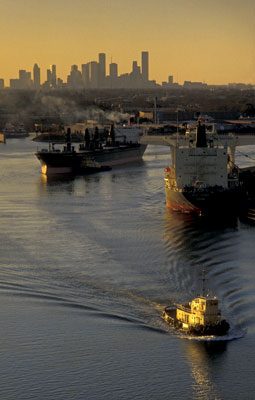
Coastal Texas with Houston in the background - Estuaries provide habitat for nearly 70% of U.S. commercial fish catch and 80% of recreational catch. Like to catch and eat blue crabs?? These iconic estuary critters need healthy estuaries and good water quality in order to maintain their populations! https://www.fisheries.noaa.gov/estuary-habitat
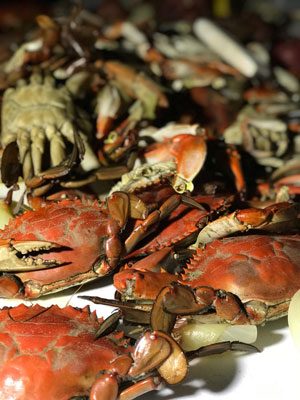
Boiled blue crabs from Louisiana - 43% of adults visit an estuary at least once a year, generating $12 billion in annual revenue. Check out the NERRS and NEP websites to find a local estuary to visit this year! http://www.nerra.org/about-us/why-we-care-about-estuaries/
- You can find sharks in an estuary! Some sharks live there, like leopard sharks, sandbar sharks, and lemon sharks, while others come to feed and reproduce. Most of the sharks you’ll find in estuaries are young and small. https://coast.noaa.gov/estuaries/curriculum/sharks-in-the-estuary.html
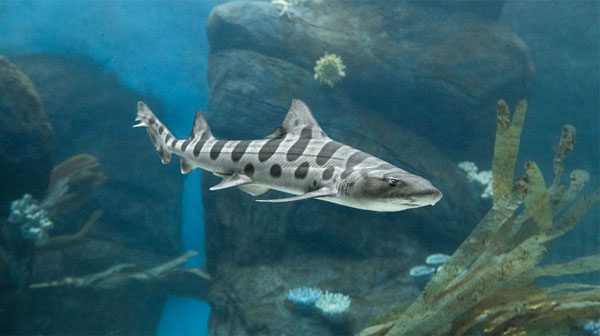
Leopard shark (Source: San Diego Zoo) - One oyster, a common shellfish species found in estuaries, can filter up to 50 gallons of water in a single day, helping to remove pollutants from the water! https://www.chesapeakebay.net/issues/oysters

Oysters from the Chesapeake Bay. Source: NOAA - Tides, which are driven by the moon and the wind, are important characteristics of estuaries. Tidal flows help supply estuaries with fresh water which helps keep water quality, especially dissolved oxygen levels, in a healthy state. https://coast.noaa.gov/estuaries/curriculum/water-going-up-water-going-down.html
- Birds that are commonly found in estuarine habitats have special beak adaptations that allow them to feed specifically in these environments! Bird beaks will differ in design depending on where the bird lives and how it finds its food. https://coast.noaa.gov/estuaries/curriculum/bountiful-birds.html
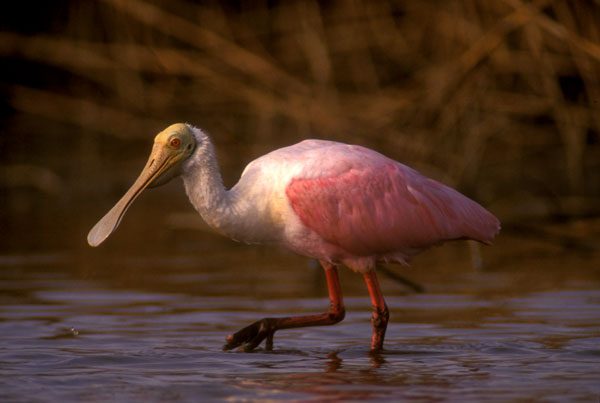
Roseate Spoonbill in Galveston Bay, TX - Coastal wetlands and marshes act as amazing “carbon sponges.” They can capture and store atmospheric carbon dioxide, helping to mitigate climate change. A single hectare of salt marsh removes 8 tons of CO2 every year! https://www.estuaries.org/bluecarbon
- Coastal ecosystems help reduce wave energy and inland flooding during hurricanes and other extreme weather events. Marshes and oysters reefs act as natural barriers to waves; 15ft of marsh can absorb 50% of incoming wave energy. https://oceanservice.noaa.gov/facts/living-shoreline.html
What’s more is that the coastal wetlands along the northeastern U.S. likely helped reduce flood damages by at least $625 million! https://www.nature.com/articles/s41598-017-09269-z.pdf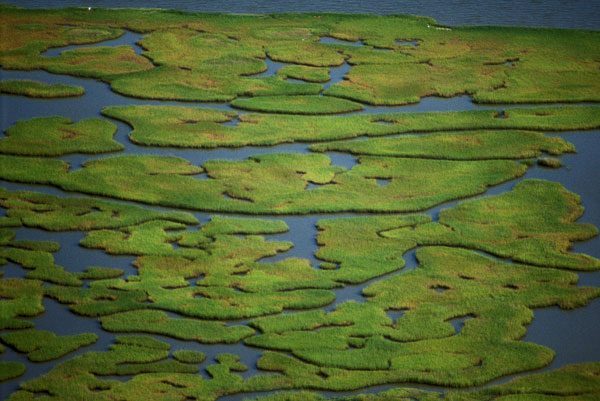
A maze of marsh along the coast helps reduce the impacts of storms on coastal communities. 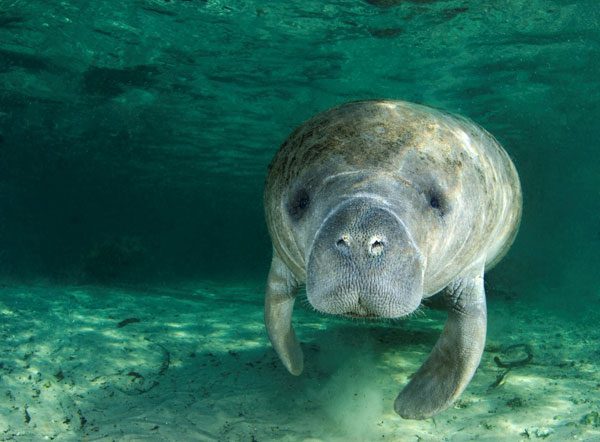
- As we all work together, young and old, we can have a big impact on the health of our estuaries and wetlands! There are a number of stewardship activities that you can participate in to help!
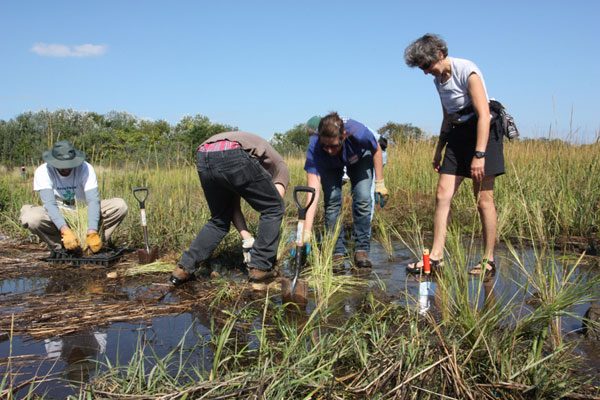
Seagrass planting on Plum Beach on Long Island
